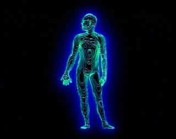

1. Define biology and give a brief explaination
of the following branches of biology: zoology, botany, ecology, genetics,
biochemistry, microbiology, paleontology, anatomy, physiology, morphology.
(section 1-1)
2. Living things are (a) made up of cells, (b)
can reproduce, (c) can grow, (d) can obtain and use energy, (e) respond
to the environment.
Other characteristics may include: (a) a need
for water, (b) a composition containing many chemical substances and a
high level of organization, (c) a definite structure and size, (d) a definite
life-span, (e) an ability to adapt, (f) an ability as populations to evolve,
or change over long periods of time.
IN addition, life processes which may be interpreted
in some general cases as characteristics associated with living organisms:
(a) nutrition, (b) transport, (c) respiration, (d) synthesis and assimilation,
(e) growth, (f) excretion, (g) regulation, (h) reproduction, (i) metabolism.
and (j) homeostasis. Construct a paragraph using the above to show that
you understand what is required for an organism to be considered alive.
(section1-1, 2-1)
3. Describe the levels of organization in biology
by defining the following:
Atoms - Molecules - Cells - Tissues - Organs
- Systems - Organism - Population - Community - Ecosystem (Biome) -Biosphere.
1. Demonstrate a knowledge of the Scientific Method
of Problem Solving and the Scientific Processes relating to biology by
defining the following: Defining the problem - Hypothesizing
- Experimenting - Observing - Measuring (Quantifying) - Communicating -
Drawing Conclusions. (section 2-1)
2. What is a controlled experiment? Provide a
example to show your understanding.(2-1)
3. Define the following tools and techniques
used in the study of biology
Tools - (a) microscopes (all types) and microscope
slides, (b) the metric system (c) dissection kits, (d) biological models
and charts, (e) preserved specimens, living specimens, diagrams, (f) computers
and software.
Techniques - (a) microscope use, (b) mounting
specimens on slides, (c) dissection and microdissection, (d) tissue culture,
(e) centrifugation, (f) chromatography, (g) computer techniques, including
CAT scan and MRI, and (h) sterile technique. (2-2)
*4. Understand the use and operation of the compound
microscope by doing the microscope lab. (2-2)
*5. Demonstrate the skills of making slides and
other microscope techniques while doing the microscope lab.(2-2)
1. What is a system is and outline its role.(5-4)
2. Describe, in general terms, the functions
for each of the following systems:. integumentary, musculo-skeletal,
digestive, respiratory, circulatory, lymphatic, endocrine, nervous, excretory
and reproductive).(ch8-16)
3. Explain what an organ is and, outline its
general function..(5-4)
4. Identify, using diagrams and labels, the major
organs that make up each system and specify the function of the organs..(ch8-16)
5. Define the following major tissue types: epithelial,
connective, blood, nerve and muscle.(5-4)
6. Outline the specific function of each tissue
type.(5-4)
7. Describe how the animal cell (human) is composed
of subunits called cell organelles and describe the function and location
for the following organelles: cell membrane, cytoplasm, ribosomes, endoplasmic
reticulum, mitochondria, lysosomes, vacuoles, nucleus, nucleolus, Golgi
body, centrioles, cilia, and flagella.(5-2)
8. Living cells require a high degree of organization
and to be able to assimilate chemicals, to ingest and/or digest food, to
use energy to maintain organization, to grow and reproduce, to respond
and adapt to the environment, to distribute essential chemicals and to
excrete and eliminate waste. Using the above criteria, describe the function
of a cell. (5-2)
9. Compare the life function of cells to the
integrated functions of organ systems and to organisms in general.(5-2)
10. Distinguish among the processes by which
materials may enter and leave cells (diffusion, osmosis, active transport,
facilitated diffusion, phagocytosis and pinocytosis).(5-3)
1. Describe the composition of matter (atoms,
elements, molecules, ions, and compounds).(3-1 & 3-2)
2. Relate the concepts of solutions, mixtures,
acids and bases to the composition and envirornent of cells. (3-1 &
3-2)
3. Identify the importance of water to life by
relating its functions as a transport and dissolving medium.(4-1)
4. Describe the characteristics of organic compounds.(4-1
& 4-3)
5. Do an analysis of carbohydrates, lipids, proteins,
and nucleic acids in terms of:
i) the atoms that compose these compounds,
ii) the function these compounds serve in the
body,
iii) the food sources of each compound,
iv) the sub-units that chemically combine to
make these compounds, and
v) examples of each group.(4-1 & 4-3)
(Suggestion - design a TABLE for #5)
6. Specify the importance of nucleic acids.(4-3)
7. Outline the function of minerals such as calcium,
phosphorus, potassium, and sodium and describe why these substances are
essential.(8-1)
8. How can carbohydrates be converted to lipids
and that proteins can be converted to carbohydrates or lipids and understand
why these conversions are important.
9. Relate how the concept of nutrient conversion
is applied by analysing some popular diets.
10. Distinguish between carbohydrates (sugars
and starches), lipids and proteins by using the appropriate tests to identify
these nutrients. List each test and how it is conducted.
11. Explain what vitamins are and describe in
general terms the vital bodily functions of vitamins A, B, C, D, E, and
K.(8-1)
12. Define enzymes and explain the make-up and
importance of enzymes.(4-4)
13. Relate the role of vitamins to the action
of enzymes.(4-4 & 38-12)
14. Summarize, with examples, how the organization
of the human body meshes together from atoms to molecules to organelles
to cells to tissues to organs to organ systems to the complete organism.(5-4)
* Lab on the use of the microscope must be started here